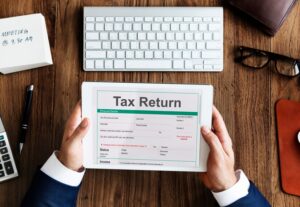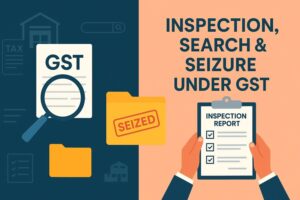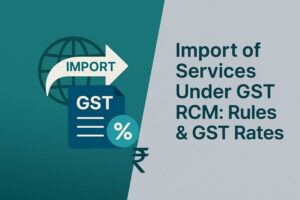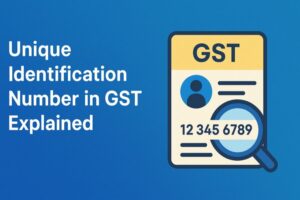What are the Tax Implications of the VAT Composition Scheme for Builders?
- 14 Aug 24
- 14 mins

What are the Tax Implications of the VAT Composition Scheme for Builders?
Key Takeaways
- Streamlined VAT Process: Fixed-rate VAT on turnover simplifies tax management for builders.
- Reduced Compliance: Simplifies record-keeping and tax filing, easing administrative burdens.
- Financial Predictability: A fixed VAT rate helps in better financial planning and cash flow management.
- Input Tax Credit Limitation: Participants cannot claim input tax credit, affecting project costs.
- Turnover Cap: The annual turnover limit may restrict business growth opportunities.
- Intrastate Sales Only: The scheme limits builders to selling within their state, impacting expansion.
The VAT Composition Scheme presents an intriguing opportunity for city builders and those in the real estate sector, simplifying tax liabilities and offering a streamlined approach to managing VAT. This comprehensive guide explores the scheme's importance, including its benefits, drawbacks, and the procedure to opt in.
VAT Composition Scheme for Builders
The VAT composition scheme for builders is a pillar of simplification in the complex world of taxes, especially within the real property and construction sectors. This guide explains into the essence of the scheme, its advantages and limitations, and its applicability to real estate transactions and work contracts.
By the end, builders and developers will have a clearer understanding of how to leverage this scheme for financial efficiency and compliance ease.
What is the VAT Composition Scheme?
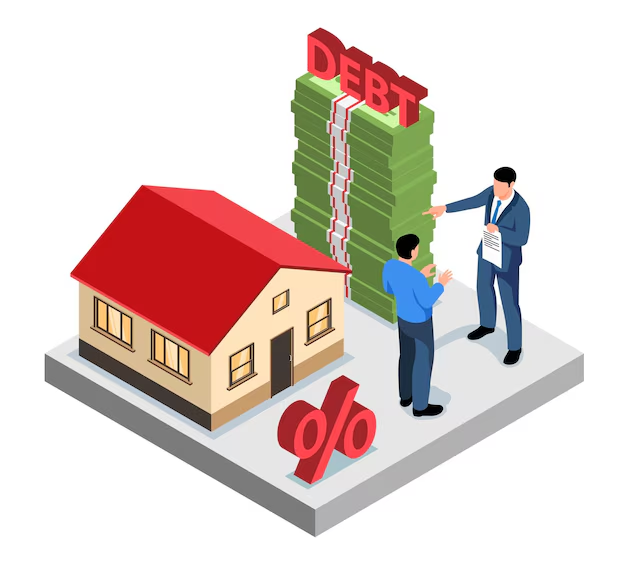
At its core, the VAT Composition Scheme under goods and services tax law is a tax strategy designed for small to mid-sized businesses, allowing them to pay VAT at a fixed rate on their turnover, not at concessional rate, without the hassle of detailed record-keeping.
For builders, this simplification can mean less time and resources spent on tax compliance and more on the actual construction and development work.
The Benefits of the Scheme
The primary allure of the VAT Composition Scheme lies in its simplification of tax filing processes. Builders can benefit from:
- Reduced Compliance Burden: Simplified record-keeping and returns.
- Lower Tax Liability: Often, the scheme allows for a lower effective tax rate than the standard VAT charges.
- Cash Flow Advantages: By simplifying the tax calculation, builders can better predict their tax liabilities and manage cash flow.
The Drawbacks to Consider
Despite its benefits, the VAT Composition Scheme is not without its limitations:
- Restriction on Input Tax Credit: Enrollees cannot claim input tax credit on their purchases, which could lead to a higher overall cost if substantial inputs are taxed.
- Turnover Limitation: There's a cap on how much a business can make annually to remain eligible for the scheme, potentially limiting growth opportunities.
- Limited to Intrastate Sales: Builders can only sell within their state, which could be restrictive for those looking to expand their business geographically.
VAT on Real Estate
VAT (Value Added Tax) on real estate refers to the tax applied to transactions involving the sale price, lease, or rental of property. The way VAT is applied can vary significantly depending on the country or region's specific tax laws. Generally, VAT on real estate transactions is levied on the value added at each stage of the development and sale of flats process, affecting both the cost to the developer and the price paid by the final consumer.
Key Aspects of VAT on Real Estate:
- Sale of New Properties: Typically, the sale of new or developer-sold properties is subject to VAT. The rate at which VAT is applied can vary, and some jurisdictions may offer exemptions or reduced rates for certain types of property, such as affordable housing.
- Secondary Market Sales: The resale of property by individuals (i.e., not the developer) often does not attract VAT, as the tax is usually only applied to new properties entering the market. Instead, these transactions may be subject to other taxes like stamp duty or capital gains tax, depending on local laws.
- Commercial Properties: VAT is generally applied to the sale and leasing of commercial properties, including offices, retail spaces, and industrial sites. Businesses involved in commercial real estate transactions can often reclaim VAT paid, subject to specific conditions and requirements.
- Lease and Rental: The lease or rental of property may also be subject to VAT. The application of VAT to rentals can depend on various factors, including the type of property (commercial vs. residential) and the lease duration.
- VAT Recovery: For businesses involved in real estate development or investment, VAT paid on construction project costs, professional fees, and related expenses can often be recovered. The ability to recover VAT can significantly impact the financial planning and tax liability of real estate projects.
Considerations for Buyers and Sellers:
- Price Impact: VAT can significantly impact the final price of real estate properties, making it crucial for buyers to understand the tax implications of their purchase.
- Compliance and Planning: Developers and sellers need to ensure compliance with VAT regulations, which can include registering for VAT, issuing VAT invoices, and filing VAT returns. Strategic planning can help manage the cash flow impact of VAT obligations.
- Exemptions and Reliefs: Some jurisdictions offer VAT reliefs or exemptions for certain types of real estate transactions, such as properties used for social housing. Being aware of these can offer significant savings.
Vat Value on Real Estate

The VAT (value-added tax) rate on builders and real estate can vary significantly depending on the country and sometimes even within different regions of the same country. Generally, VAT is applied to the sale of new construction of buildings and flats by builders or developers, with the rate being determined by the national tax legislation.
Here are some common scenarios regarding VAT on builders and real estate:
- Standard VAT Rate: Many countries apply their standard VAT rate to real estate transactions, particularly for new builds. This rate can range widely, from around 5% to 25% or more, based on the country's tax policy.
- Reduced VAT Rate: Some jurisdictions offer reduced VAT rates for certain types of real properties transactions. For example, affordable housing projects or renovations of existing properties might qualify for lower rates as an incentive to promote housing development or sustainability.
- Exemptions: There are cases where the sale of residential property is exempt from VAT, particularly the sale of existing (used) homes. In such scenarios, other taxes like stamp duty or transfer tax might apply instead.
- VAT on Commercial Properties: Commercial properties, such as office buildings or retail spaces, typically attract the standard VAT rate. However, businesses buying commercial properties can often reclaim the VAT paid, subject to certain conditions.
- VAT on Rental Income: The VAT treatment of rental income from real properties can also vary. In some countries, residential rentals are exempt from VAT, while commercial rentals are subject to VAT.
- Differential Rates: In certain regions, the VAT rate applied can differ based on the type of property (residential vs. commercial), the purpose of the transaction (sale vs. lease), and the status of the buyer (individual vs. business).
Valuation of Goods in Work Contracts
- Rate of Tax: The valuation of goods in work contracts is critical as it directly impacts the rate of tax applicable. Under various tax regimes, including VAT, the total contract value is dissected into components of goods and services for tax purposes. This separation is essential for applying the correct VAT rate, ensuring compliance, and optimizing tax liability.
- Contractor in Respect: For a contractor, the respect and adherence to tax laws in the valuation process are paramount. The contractor must accurately report the cost of goods and services to avoid disputes with tax authorities and ensure a fair application of the tax rate.
- Transfer of Property: The valuation intricacies also touch upon the transfer of property in work contracts. When a contractor supplies goods as part of a service, determining the point of property transfer becomes crucial for VAT purposes.
- Immovable Property: Particularly with immovable property, such as in construction properties or the construction of flats, the method of computation for VAT can become complex. The valuation must account for the material and labor costs separately, adhering to the applicable rate of tax for each component.
- Composition Tax Liability: Under the composition scheme, contractors might opt for a simplified tax rate but must carefully calculate the composition tax liability. This liability is based on a fixed percentage of the turnover, which includes the valuation of goods supplied under contract.
- Scheme of Composition: For those involved in property under construction or construction flats, the scheme of composition offers a streamlined approach to handling VAT. However, it requires a clear understanding of the valuation methods and the tax implications of various types of contracts, whether they involve brass scrap, areca nut, or more valuable materials like gold.
Procedure to Avail the Scheme

Step 1: Registration Application: To avail of a composition scheme, the first step is submitting a registration application. This application is critical for businesses, including claimant dealers and registered dealers, as it marks their transition from standard VAT practices to the simplified scheme.
Step 2: Fresh Registration: Even for businesses with existing VAT registration, opting into a composition scheme may require a fresh registration or a modification of the existing registration details, emphasizing the business's shift in tax liability computation.
Step 3:Interstate Purchases: One of the limitations for participants in the composition scheme is the handling of interstate purchases. Businesses must carefully manage these purchases to comply with the scheme's restrictions, which may preclude credit of input tax on goods acquired from other states.
Step 4: Annual Return and Filing of Returns: Compliance under the composition scheme also involves the periodic filing of returns, which may vary from quarterly to annual returns, depending on the jurisdiction. This filing ensures transparency in the business's operations and adherence to the simplified tax liability approach.
Step 5: Levy of Tax and Service Tax: While the composition scheme primarily concerns VAT, businesses must also be mindful of other tax liabilities, including service tax or union territory tax, which may not be covered under the scheme. This comprehensive understanding ensures full compliance and optimal tax planning.
A Tailored Approach for Builders and Real Estate Developers
For those in the building and real properties sectors, the Composition Scheme offers a tailored solution to navigate VAT. By understanding below mentioned key pointers, builders can make informed decisions on whether this scheme aligns with their business model and financial goals.
Payment of Tax and VAT on Sale: For builders and developers, the payment of VAT is a significant aspect of their financial planning. The VAT on sale of properties or construction services is calculated based on the purchase price of goods and services involved in the construction process.
Under a composition scheme, developers can benefit from a more streamlined process, where the tax rate applied is a fixed percentage of their turnover, simplifying the computation of tax liability.
- Composition Developer Scheme: The Composition Developer Scheme is designed specifically for the real estate sector, allowing developers to opt for a simpler tax payment method. This scheme is beneficial for managing VAT on sale transactions and minimizes the administrative burden associated with detailed tax calculations based on individual sales or services.
- Liability in Respect and Respect of Contract: In the construction industry, contracts often dictate the terms of tax liability. Under the standard VAT regime, developers must meticulously analyze each contract to determine their tax in respect of the goods and services provided.
However, by opting for a composition scheme, developers can streamline this process. The scheme simplifies the liability in respect of contracts, offering a clear and concise method for determining tax dues without dissecting the financial intricacies of each project.
File Returns and Quarterly Returns: Compliance with tax regulations requires the periodic filing of returns. Builders and developers engaged in a composition scheme are required to file returns, typically on a quarterly basis. This simplifies the process, as the returns under a composition scheme are generally less complicated than those required under standard VAT regulations, focusing on gross receipts rather than transaction detailed records.
Purchase Price and Payment of VAT: The purchase price of materials and services directly influences the VAT payable by developers. In the context of a composition scheme, the emphasis shifts from the actual VAT incurred on purchases to a simplified calculation based on sales. This can aid in financial forecasting and budgeting, as the payment of VAT becomes more predictable.
- Sales Tax Laws and Computation of Tax Liability: While navigating VAT, builders must also be aware of the broader spectrum of sales tax laws that may apply to their operations. The composition scheme, by offering a simplified computation of tax liability, helps builders and developers to align their practices with both VAT and sales tax laws without the need for intricate calculations.
- Tax Period and Earlier Composition Scheme: The tax period, typically defined by the fiscal quarter, plays a crucial role in tax planning and compliance. Builders who previously participated in an earlier composition scheme may find the transition to a new scheme straightforward, provided they understand the nuances of the updated regulations and ensure their operations align with the current tax period's requirements.
- Scheme to Composition Scheme: Transitioning from the standard VAT system to a composition scheme offers several advantages, including reduced paperwork, simplified tax calculations, and clarity in financial planning. However, it's essential for developers to carefully assess how this transition impacts their overall tax strategy, especially concerning ongoing and future projects.
Conclusion
The composition scheme under the goods and services tax acts as a cornerstone for builders, developers, and construction companies, offering a simplified yet comprehensive framework for tax compliance. It balances the need for simplicity in tax administration with the complexities inherent in the construction sector, allowing businesses to focus on their core activities while ensuring compliance and financial efficacy. By leveraging this scheme, the construction industry can navigate the intricate tax landscape with greater confidence and strategic insight.
If you want to make the most of PICE business payment solution and make GST payments easily, take a demo session now to see how it works for you.
 By
By 





